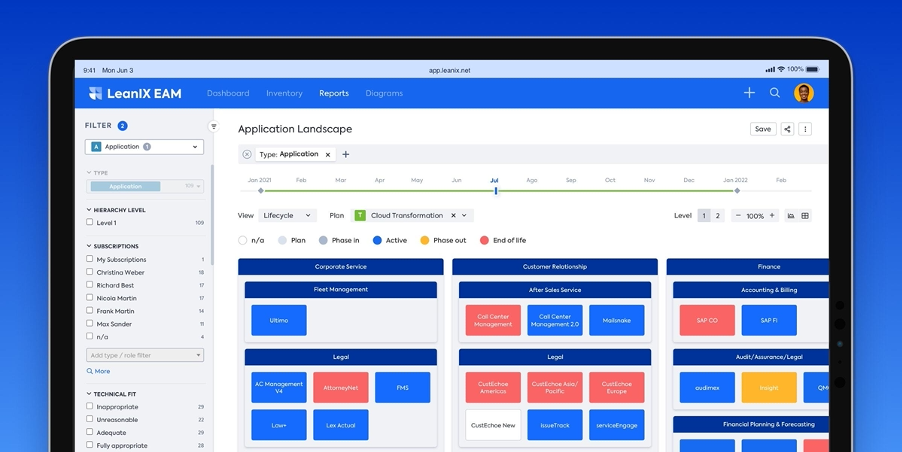
Business transformation is impossible without a clear vision of your target operating model. Let's explore how you can build a model target state and map out your path to get there.
Before you can run a marathon, you need to know where the finish line is. If you don't know where you're going, even your first step could be in the wrong direction.
An ill-defined target could also be the reason why 70% of digital transformations fail. Without the right process for defining the vision and purpose of your business transformation, you're unlikely to succeed.
This is why you need a clear target operating model before you begin a business transformation. Let's consider what a target operating model is and the steps you need to take to get your organization where it needs to be.
What Is A Target Operating Model?
A target operating model is a blueprint for the optimum way your organization would function, if there were nothing preventing you from doing so. It's a vision for your company to strive for and allows you to plan out how to circumvent blockers and take gradual steps toward your ideal state.
There are as many formats for plotting out your target state as there are companies using them. From basic Excel spreadsheets to high-tech 'digital twin' computer models, whatever your target operating model looks like, it needs to act as a rallying call for your colleagues.
Even if you never actually achieve that target state, then a target operating model still gives your organization a shared goal to strive for. Every change you make that gets you closer to your target will be an improvement in the way you work.
As time moves on and technology and the market changes, so too will your target operating model change to accommodate the new needs of the market. This all means that the process of creating a target model and working towards it never ends.
It does, however, begin, so let's consider the seven steps you can take to establish and get the most from a target operating model.
Step 1: Understand Your Current Landscape
There are many methodologies and formats for target operating models, but there's one thing that everyone seems to agree on: the key to creating the right target operating model is to understand your current business state.
A deep and comprehensive understanding of your business capabilities and processes from the ground level is key for optimization. Without understanding how your business works, you'll never be able to improve it.
That level of understanding of processes can only be obtained from the people who actually carry out those processes every day. That's why the bulk of the work in designing a target operating model comes from talking to your colleagues across your business and understanding their work.
Surveys are vital for gathering standardized information from diverse groups of workers within your organization. From this information, you'll be able to derive each team's specific needs and challenges.
Step 2: Gather Information On Pain Points
When processes and workflows are optimal, things go smoothly. When things go smoothly, workers don't get frustrated.
When you speak to your colleagues about their processes, look for signs of frustration or stress. These will usually be red flags that there is room for improvement in processes.
When you have a list of the pain points your colleagues are experiencing in processes and workflows, you will have a list of where you need to focus your transformation efforts.
Step 3: Assess The Potential
The next step in constructing your target model requires detailed knowledge of operating methodology and the business technology available on the market. Understanding this will allow you to turn your colleague's problems into opportunities for improving processes.
This is where your creative problem-solving skills come into play and you show your true value for your organization. This is for your target operating model, however, so there's no need to worry too much about the details of implementing your solutions.
This is simply a way to show how the deficiencies in your operating model could be avoided. Stay creative and don't get bogged down with the technical details just yet.
Step 4: Build Your Vision
When you have a list of potential solutions to all the problems present in your organization, you can start combining them into your target operating model. If updating your enterprise resource planning (ERP) platform, moving some applications to the cloud, and updating to a new version of your sales system will avoid pain points, then you know those elements need to be in your target operating model.
In addition, you need to take into account your future needs, available resources, market, scale, and strategy. Putting all of that together, you can start to create a picture of what your target operating model might look like.
There are a large variety of aspects to your organization to consider in your target model. Ashridge Executive Education recommends looking at six aspects making up the acronym POLISM (or POLIST in McKinsey's version):
- Processes
- Organization
- Locations
- Information and IT
- Suppliers
- Management (sometimes referred to as 'Timescales')
This perhaps oversimplifies the complexity of an expansive list of aspects to consider. A few more examples include:
- Business strategy
- Agility and long-term planning
- IT landscape
- Organization chart
- Resources and training
- Culture
- Governance and controls
- Stakeholder buy-in
- ...and much more...
A key thing to remember is not to fix what isn't broken. Even when restructuring your organization, you can still make use of your existing people and resources in the new structure, wherever possible.
Step 5: Design Your Roadmap
Whereas actually creating your target operating model is complex and laborious, once you have it, creating a roadmap is fairly simple. You merely need to draw a metaphorical line between the current state you have explored and the target state you designed.
The complexity in this stage lies in choosing what changes are feasible to tackle first, which are long-term goals, and which are just pipe dreams for now. There's also the matter of charting the process and timescales for progression.
When you finally have a map of your current state, your target operating model, and the roadmap between the two, it's time to start making use of them. The key to that, however, is collaboration.
Step 6: Share, Share, Share
At every stage of the process, it will be key to involve your stakeholders. This will allow you to:
- Validate your conclusions and the feasibility of solutions and timescales, with the experts
- Make it clear to those impacted by the decisions you've made why you've made them, so they can see the value you're trying to achieve
- Identify and overcome any objections to the changes before you begin making them
Once again, your target operating model should be a rallying call for your organization and a goal to work towards. This can only be the case if you achieve buy-in from all your stakeholders.
Step 7: Take Action
We've talked a lot about the theory of target operating models, but there's no value to them unless they inspire action. While it wouldn't be possible to simply enact your target operating model exactly as it is, you need to ensure that you're always looking to take steps towards it.
Even the tiniest amount of progress toward your target state should be an increase in productivity and employee or customer experience. That's why it's important to remain vigilant for opportunities to take steps along your roadmap.
This is the value of having a dedicated enterprise architecture function within your business, so someone is responsible for driving your progress forward. Enterprise architects can also work on continually refining your understanding of your current state, your target operating model, and your roadmap.
The LeanIX EAM

Keeping track of your current business state, designing your target operating model, and building a roadmap is challenging enough. When you need to continually iterate on all of these things, it can become even more difficult.
To keep track, you need to empower your enterprise architects with a tool that's specifically designed for them. LeanIX EAM is an enterprise architecture management platform built specifically to track your IT landscape and application portfolio, target IT operating model, and technology roadmap.
To find out more about how LeanIX EAM can help you make the most of your target operating model, book a demo:

.png?width=140&height=107&name=BTMPlaybook-FI%20(1).png)

